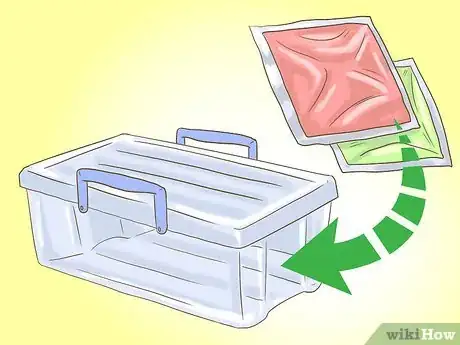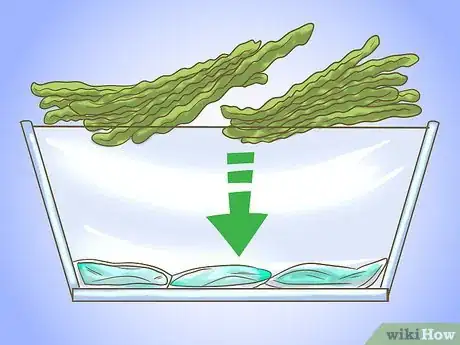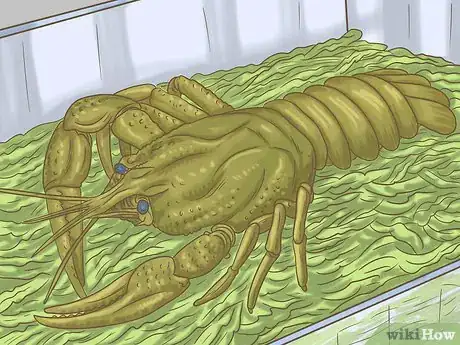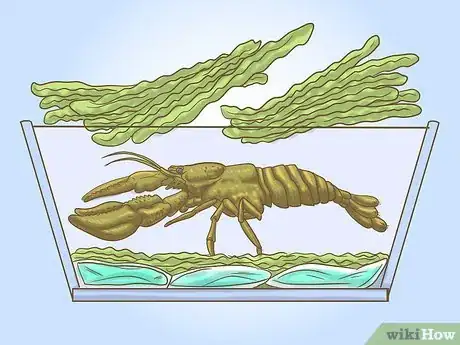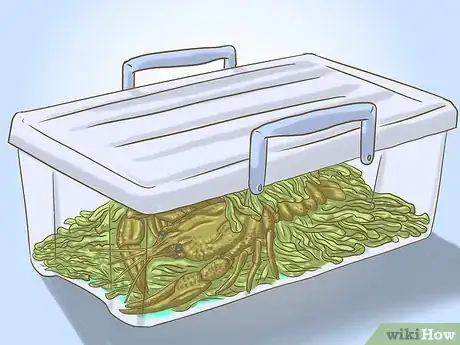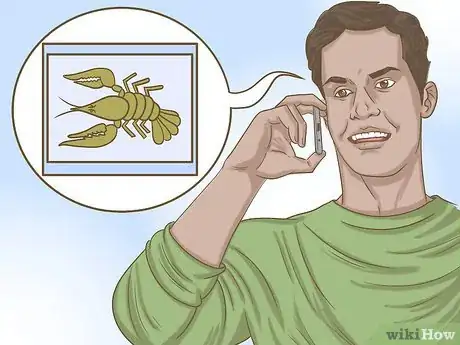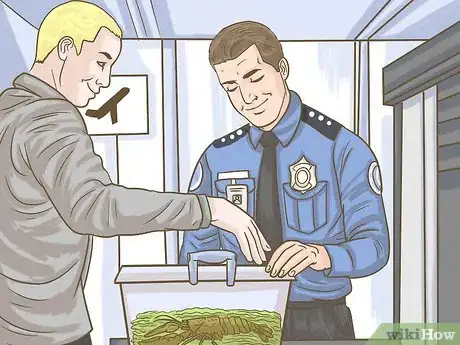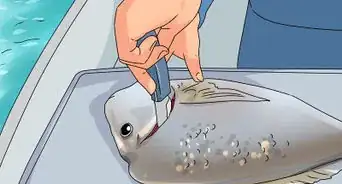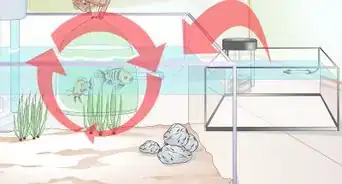X
This article was co-authored by wikiHow Staff. Our trained team of editors and researchers validate articles for accuracy and comprehensiveness. wikiHow's Content Management Team carefully monitors the work from our editorial staff to ensure that each article is backed by trusted research and meets our high quality standards.
This article has been viewed 28,623 times.
Learn more...
There are few things better than a forkful of delicious, buttery lobster. But what if you want to travel with some tasty crustaceans to share with the family back home? Traveling with live lobster can seem like a daunting task, but the process is actually fairly simple.
Steps
Method 1
Method 1 of 2:
Packaging the Lobster
-
1Line the bottom of a plastic spill-proof container with frozen liquid gel packs. This will help keep the lobster fresh. If you do not have gel packs, a Ziploc baggie filled with ice will suffice. [1]
-
2Cover the gel packs with seaweed. If you don't have seaweed, wet newspapers will work as a substitute. Be sure to use a few layers to protect the gel packs from the lobster. [2]Advertisement
-
3Place the lobster on top of the seaweed. Be sure the lobsters' claws are secured, either with rubber bands or zip ties. Give the lobsters enough room so they will not be crushed by the lid. [3]
-
4Add one last layer of seaweed on top of the lobster. Tuck the seaweed into the sides of the box to secure your lobster and pack the lid on tight.[4]
Advertisement
Method 2
Method 2 of 2:
Flying with Lobster
-
1Package your lobster in a clear plastic container if you plan to check in your lobster. TSA regulations allow live lobsters to be checked in and will visually inspect your lobster. To make the process go more smoothly, make sure the container is spill-proof.[5]
-
2Contact your airline if you plan to bring your lobster as a carry-on. Not all airlines allow seafood to be brought in as a carry-on, so it helps to check in with them before getting to the airport and see what policies they have in place.
-
3Prepare for additional scrutiny when flying in the U.S. Expect to have your lobster inspected. Again, contact your airline to determine the proper procedure for carrying on lobster.
Advertisement
Warnings
- If your lobster has died after transit, it may still be safe to eat. If the lobster smells of ammonia, it is not safe for consumption and may cause severe foodborne illness if ingested.[10]⧼thumbs_response⧽
Advertisement
References
- ↑ https://www.tsa.gov/travel/security-screening/whatcanibring/items/live-lobster
- ↑ https://www.tsa.gov/travel/security-screening/whatcanibring/items/live-lobster
- ↑ https://www.youtube.com/watch?v=02RVi3cx7ug
- ↑ https://www.youtube.com/watch?v=02RVi3cx7ug
- ↑ https://www.tsa.gov/travel/security-screening/whatcanibring/items/live-lobster
- ↑ https://www.southwest.com/html/customer-service/baggage/index.html?clk=GFOOTER-CUSTOMER-BAGS
- ↑ https://www.tsa.gov/travel/security-screening/whatcanibring/items/live-lobster
- ↑ https://www.npr.org/sections/thesalt/2012/09/12/160944468/have-lobster-will-travel-and-race-the-clock
- ↑ http://www.foodrepublic.com/2012/06/15/8-tips-for-buying-lobster-and-what-to-do-once-youve-bought-it/
About This Article
Advertisement
